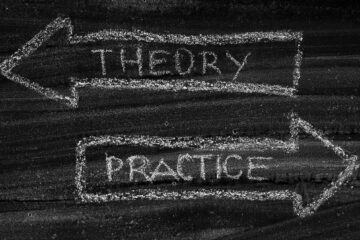Many years ago, in 1971, I was asked to join the White House unit set up to plan for the establishment of the National Institute of Education (NIE), a new federal agency to be exclusively focused on education research. Since then, the people of the United States have spent tens of billions of dollars on education research in today’s dollars.
When NIE was established, the aim was explicit: To have an agency that would do for education what the National Institutes of Health were doing for medicine, to make scientific discoveries that would lead to dramatic improvements in student achievement. But there have been no advances in the achievement of our high school students at all…in 50 years. Is it possible that our researchers have been looking in the wrong place with the wrong methods?
When NIE was founded, it was easy to take U.S. dominance in education for granted, and therefore to assume that we would find the world’s best policies and practices at home. After all, whereas we had a mass system of elementary education, secondary education and even post-secondary education, most of the world’s adults were illiterate, few were in secondary school and college was only for the world’s elites. The rest of the world was coming to the United States to figure out how to build effective education systems.
We were still resting on our laurels when NIE was founded in 1972. In the following year, the teachers college in Singapore, founded when that little country was still part of the Malaysian federation, became the Institute of Education, later to become Singapore’s National Institute of Education. Only a dozen years earlier, Singapore had been on its knees. The Malaysians had thrown them out of their federation, the English had closed down their big naval base, the economy was in tatters and various ethnic groups were fighting each other in the streets. Most Singaporeans were illiterate. There were fewer than 1,000 university graduates in the whole country.
Things are different today. Singapore has one of the most highly educated workforces in the world and is home to one of the world’s highest standards of living and most successful economies. Singapore’s students graduate, on average, with the equivalent of at least two and a half years more education than ours, even though they are in school the same number of years. They score at the top of the global charts. Our students score right in the middle of a distribution of about 70 countries.
What Americans do not seem to grasp is the fact that the world is not illiterate any more. Country after country has been able to match us in producing students who leave school with what we call the basic skills, countries whose adults charge much less than our workers with the same skills. Not only have many formerly illiterate countries caught up with us on basic skills, but a whole host of other countries have zoomed right by us, like Singapore. Not satisfied with catching up with us on basic skills, they, like Singapore, are far exceeding us on advanced skills.
None of this is news to alert Americans who try to keep up. These facts are well known. People now yawn when I trot them out once again. There is something weird, almost surreal, about this observation. What I’ve just said is that many Americans realize that other nations are greatly outperforming us in education and most know that this could have disastrous effects on our national economy, on our children’s prospects and even on the stability of our political institutions, but are doing nothing about it.
 There are lots of reasons for this. I want in this blog to focus on only one of them. That is the way our education research community thinks about the way in which education research contributes to gains in student achievement.
There are lots of reasons for this. I want in this blog to focus on only one of them. That is the way our education research community thinks about the way in which education research contributes to gains in student achievement.
This is a story that reminds me of the old joke about the drunk and the light. The drunk’s friend sees him circling the streetlight and asks what he’s doing. The drunk says that he’s looking for his car keys, which he just dropped. The friend asks whether he dropped them near his car. The drunk says yes. But, says the friend, you are not looking near your car. You are looking over here. Yup, says the drunk. That’s where the light is.
I told you that other nations have high-performance education systems that greatly outdistance ours. If you want to know how to match the performance of a first-class skier, mechanic, chess player, actor, investment bank or university, go and study a first-class skier, mechanic, chess player, actor, bank or university. Why on earth would you spend good money studying a skier, mechanic or chess player that was once great, but is now middle of the pack?
You object. You say that we have highly acclaimed researchers on say, reading, school finance, teacher professional development and school leadership right here in the United States. What difference does it make if they choose to do their research here, rather than, say in Singapore, or Finland or Shanghai or British Columbia? In fact, you say, we know that those places have different systems, different values and different cultures than ours. So, how do we know that anything that our researchers find works there would work here? If we do the research here and it reveals something that works, then we don’t have to wonder whether it will work here……period, end of argument. Right?
Well no, that is not the end of the argument. It is only the beginning. The fact that these are different systems is not a reason to ignore them, but to focus our attention on them.
It turns out that the top-performing systems are top performing mainly because they have better designed systems, the parts and pieces of which are working in harmony with each other. When they change any part of their system, they look first to make sure that the new piece will work as well or better with the other parts and pieces than the part that is being replaced with the new policy or practice. We almost never do that.
This is very abstract. Let me give you an example. When the federal government virtually mandated that states implement the Common Core State Standards, what happened almost everywhere was that teachers were held accountable for the performance of their students against the new standards. But, almost everywhere, student achievement was measured by the same cheap, multiple choice tests it had always been measured by, tests that had nothing to do with the Common Core and, in fact, violated the spirit of the Common Core. Teachers either had to use textbooks issued before the Common Core was written or textbooks that had a gold seal that said they were aligned with the Common Core but were not. Teachers knew that actually teaching to the Common Core would require a new curriculum but were given no time or other resources to create one. When confronted by his own staff with the risks this approach entailed, Secretary Arne Duncan, by his own admission, told them to go ahead anyway, because the only alternative was doing nothing, since there was no guarantee that future Secretaries of Education would follow in his footsteps. He was certainly right about future Secretaries of Education, but no top-performing country would have dreamed of designing or implementing a major reform this way.
The problem of avoiding a systems-level view runs deep. It is rooted in our shared conception of the best way to improve student performance. That conception is based on the way we do education research and evaluation. The idea is borrowed from clinical medicine, the way we do medical research: Identify a disease or condition, identify possible treatments and then conduct controlled experiments to measure the effects of the treatment on the condition or disease, having controlled for all the other possible factors that might have produced the observed effects. But the adoption of the clinical medicine model has proven to be a terrible handicap.
“What’s wrong with it?”, you ask. “It has produced enormous improvements in the health sector, why not in education?” Because there is an enormous difference between education and health. In the case of human health, the design of the system is a given. It is the design of a human being. The purpose of medical research is not to design a better human being. It is to address disorders within that system. So, it makes sense to isolate specific disorders and isolate treatments of those disorders and look for treatments that will reliably address the disorders under stated conditions.
In the case of education, the issue is the design of the system. NCEE’s research on education systems all over the world makes this abundantly clear. There is very little magic in the “treatments.” Everyone knows, for example, that students will perform better if they come to school ready for the curriculum the school offers, if that curriculum is set to high standards and taught by highly-qualified teachers who have high expectations for their students. Those points are not in dispute. The question, rarely asked in the United States, is how to design and implement well-constructed, highly-integrated systems that run that way, reliably, for all students.
We are just like the drunk looking for the keys under the streetlight. We are looking in the convenient place, which happens to be the wrong place. What’s worse is we may be looking for the wrong thing to begin with. We look for silver bullet solutions, using a research paradigm that was brilliantly designed to produce information about the effectiveness of silver bullet solutions, but we fail to realize that what we are doing is finding out which silver bullets will produce marginally better results in a highly dysfunctional system, a system that was designed more than a century ago for a very different world. Those silver bullets may or may not work in a more functional system. We’ll never know because we would find out only if we had a better functioning system.
What we should be doing is researching high-performance systems in countries, states and provinces the size of American states, so we can learn what we need to learn to build and run high-performance systems that are as good as the world’s best. But the American education research establishment, caught up in a model of education research that is highly inappropriate, has exhibited no interest in doing that.
Why? Because the social structure of the American education research establishment rewards people who have developed a high level of technical mastery of the methods that the establishment has blessed and validated and because policymakers are socialized to act on the findings from that kind of research. After decades and billions of dollars of expenditure, the education research establishment, by and large, does not know how to reliably identify the factors that account for success in large-scale education systems. That’s where the keys are. So, it walks over to the kinds of problems it does know how to address. That’s where the streetlight is.
I am not making an argument for reducing the amount spent on education research or eliminating studies of domestic initiatives. I am making an argument for redirecting how that money is spent. Guess what? When we look at how the top performers got to be so good, without exception, they tell us that they carefully studied the global leaders. Maybe they were on to something. After all, they found the keys, didn’t they?





